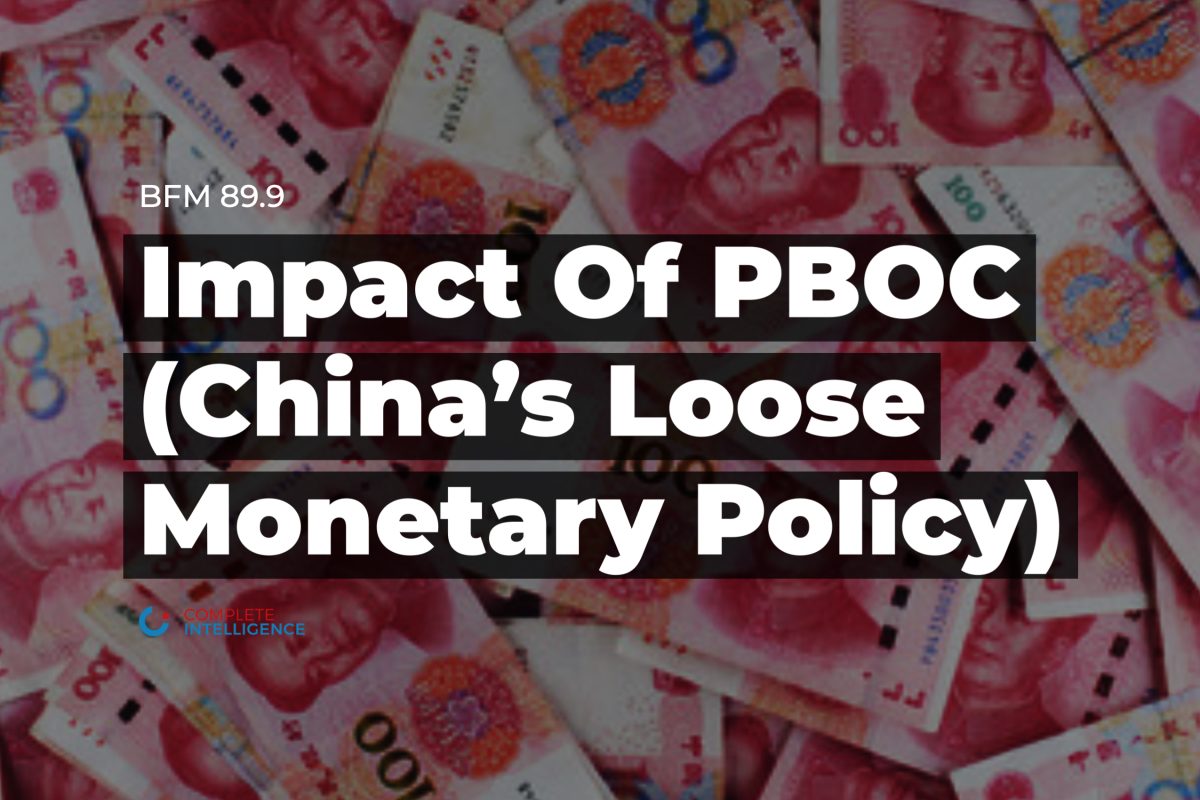Tony Nash from Complete Intelligence explains whether the US market’s biggest 4-day rally since November can sustain?
This podcast first appeared and originally published at https://www.bfm.my/podcast/morning-run/market-watch/will-the-rally-sustain on February 3, 2022.
Show Notes
SM: BFM 89.9. Good morning. You are listening to the Morning Run. I’m Shazana Mokhtar together with Wong Shou Ning and Philip See. It 7:05am on Thursday 3rd of February. But first, let’s recap how global markets closed yesterday.
WSN: Well, the US had a pretty good day. That was up 0.7%, SP 500 up 0.9% while Nasdaq was up 0.4%. And for Asia, the only market that was really open with the Niki, and it was up 1.7%. Hong Sung, Shanghai, Singapore and our very own FPM KLCI.
SM: We were all closed for celebrating the Year of the Tiger. Speaking of meta, I think the results came out and they were not within forecast essentially.
WSN: Well, actually after hours, right. The trade actually the share actually tumbled more than 20% in extended trading earlier. And I think it’s on the back of like what you say, Charles. It’s disappointing earning results. And added to that, they are giving weak guidance and said that user growth has stagnated. Now that’s kind of scary for a company the size of matter.
PS: Yeah.
Just to break down the numbers, earnings per share was at $367 versus the expected 384. Revenue was at $33.67 billion. The expected was 33.4, which wasn’t so bad. But Facebook also missed estimates with user numbers with his daily active users at one point 93 billion versus the expected one point 95 billion.
WSN: Now, I think why the markets are nervous is because when you think about it. Right, this company is at a critical juncture at this point. It’s fighting a regulatory battle on multiple France. And it’s also, remember, guys, it’s trying to shift into the Metaverse. And this shift is costing them an extremely a lot of money. So whether they can translate these KPCS that they’ve already kind of agreed to in terms of $2 and cents, that’s the question mark when your core business is not growing.
PS: I guess a big question of how do you monetize from meta and that pathway has not been articulated very carefully, isn’t it? But that’s a long term expectation. As you said, Shannon, there’s so much regulatory pressure on them. And I wonder with the whole discussion about your revenue source, whether you can rely on advertising revenue now going forward. That’s a big challenge for Facebook going forward and better.
SM: I mean, that’s going to be one of the major headwinds to them. I mean, Apple’s iOS changes affected ad targeting and measurements. That’s already a headwind. There’s also the fact that a lot of people are sort of flocking to other options when it comes to social media TikTok, YouTube. I think the advertising rates for Metsa’s own Reals on Instagram, that’s a lot lower than what’s available on other unfeeding stories.
WSN: No rewind, a few earning season rewind. Let’s go back a few quarters. And I think what has happened is that 18 year olds to 29 year olds were flocking to Facebook. Right. So the question is better, is it going to attract them? And what progress are they going to make? So that’s another thing that the markets are looking at.
SM: Joining us on the line now for analysis on what’s moving global markets, we have Tony Nash, CEO of Complete Intelligence. Tony, good morning. Thanks so much for speaking with us today. Can we get a quick reaction from you then on the disappointing results from Meta and Spotify? Does this mean something for tech bargain hunters?
TN: Well, I’d be really careful here because tech is really a deflation play. It’s not an inflation play. And so as we’re in the midst of the inflation cycle, there’s more movement to other sectors. So I don’t necessarily maybe it’s a short term opportunity, but again, if I was investing, I’d be really careful here with the Spotify and other misses.
PS: And can we get your perspective on the energy and financial sector? They helped the US Equities stage a mini rally over the last few days. Why are these economic sectors being buoyant while others like tech creating?
TN: Yeah, well, energy, commodities, finance, those are deflation plays or those are inflation plays. I’m sorry. And so that’s why more money is moving into commodities and energy and so on and so forth. So the market seems to be indicating that it doesn’t believe at least the equity market seems to be indicating that it doesn’t believe the Fed will fight inflation effectively. So they seem to be indicating that we’ll keep ripping on inflation.
WSN: So, Tony, how should we allocate our cash? Let’s say we have cash. Where would you be putting your money?
TN: Oh, gosh. Well, you really have to that’s an individual question. I just want to be really careful. So there’s a lot of money moving into commodities because there’s a belief that inflation is here to stay for a while. So if I were looking around, that’s really where I would look, of course, you have to have a risk allocation and you have to have some money and things like tech. But I would focus on companies that actually make physical stuff rather than, say, the work from home plays that we had over the last two years.
SM: And, Tony, let’s take a look at the US yield curve. It’s flattening even before the Fed has fired the first shot on rate hikes. What could possibly be causing this to happen? And do you see a short or long cycle of rate increases?
TN: Yes, I think to answer your last question first, I think what would be best is a short and abrupt cycle because it would really put a stop on the threat of inflation and so on and so forth. So like a 50 basis point hike in March would probably be the best solution we could find. But when we look at the yield curve flattening first, it is a traditional signal of a looming recession. So if you look at today’s employment data in the US, there was a loss of 300,000 jobs. So we’re in this weird place where we have booming inflation and a loss of 300,000 jobs. So it’s like the late 1970 stagflation. I’m not going to say we’re necessarily there, but if you just look at today, it seems like right. So what the yield curve flattening means is bond traders are pretty nervous and stagnation is ugly. So they seem to be saying that they don’t believe that the Fed will take the necessary action on inflation in the short term. So JPOW is not Volker is really what they’re saying. Paul Volcker from the 1980s. So bond traders can really make things difficult on both the Fed and equity markets.
So the Fed has a real balancing act to do. They don’t want equity markets to crater, but they don’t want bond traders to kind of extract their vengeance on the Fed and equity market. So if we don’t see rates rise, if we don’t see the balance sheet reduced, then bond traders are not going to be happy and it could get ugly in safety, too.
PS: I wonder what all this means for the US dollar. Where does the US dollar hit going forward and how do you see Euro and Yen perform against the greenback?
TN: Yes, again, that depends on which direction the Fed takes. If the Fed’s approach is weak and if fiscal support from Congress is weak or it doesn’t come, as many in equity markets seem to be implying, then the dollar will likely level out or even depreciate a bit. That would mean a stronger Euro and yen versus the dollar in a relative sense. And currencies are all relative. If the Fed resumes the hawkish talk that they started last week in Jpow’s comments and then on Sunday and Monday through some of the regional presence, then the dollar will strengthen and the Euro and the yen will weaken. Obviously on a relative basis. There’s not a lot of strength in Europe. And especially when you look at some of the geopolitical issues around, say, Ukraine and Russia, there’s a lot of risk in Europe. So people are really nervous about Europe and then Japan. Yeah, it’s stronger than Europe, but that’s really not saying a lot. So the yen will strengthen on a relative basis, but it’s not necessarily an endorsement of the strength of the economy.
SM: Tony, thanks so much for speaking with us this morning. That was Tony Nash, CEO of Complete Intelligence, talking to us about some of the trends that will be moving markets in the weeks and months ahead.
WSN: Yeah, it looks like markets are headed towards a very volatile period for the moment. So the Nest did really well. But what we do know is the results of Spotify and also Meta were disappointing. And after hours trading, these stocks took a huge hitting. Even PayPal, which results came out the night before, also is down 20 over percent. It looks like markets are seeing this glass as half empty rather than half full so the minute you disappoint right you really get whacked down because everyone basically was already making money the year before so their patience in terms of like writing out this maybe dip in earnings is just not there.
PS: It’s a consequence of so many issues, isn’t it? Because we saw this dip even before the real earnings came out, isn’t it? Because that was when JPY in the earlier minutes said that they were going to raise interest rates and also accelerate tapering and then I think these really disappointing earnings I think just compounded the matters worse but you do see some pickup going forward so whether they’re selective opportunities you don’t play the sector, you don’t play the themes but you really go stock by stock now, isn’t it?
WSN: Yeah, you have to take a very bottom up approach. The easy money is clearly made but you can see a shift of money and this is what Tony is saying is there’s a shift towards commodity prices right? So brand crew this morning is close to $90 barrel. It’s close to seven year high. This is despite the fact that OPEC has said that they are going to raise output but there’s a lot of judges because of the geopolitical tensions that we’re seeing coming out of Ukraine but maybe it’s also due to the fact that oil is truly an inflation play and inflation is here. It’s not transitory at all.
PS: Yeah, and I just think I do see some improvement also in Bitcoin right? If you can see across ECM and Bitcoin up actually marginally just one and a half percent you see some good news there but I wonder if this is a sign of whether that the pressure is really on the equities market going forward but the rest are still holding resilient.








